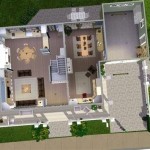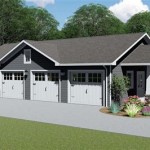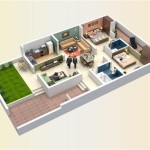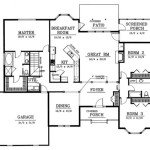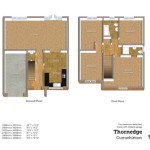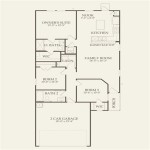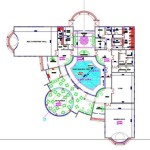Essential Aspects of Traditional Korean House Plans
Traditional Korean houses, known as hanok, embody centuries-old architectural wisdom and cultural traditions. Their distinctive designs reflect harmony with nature, emphasizing simplicity, functionality, and aesthetics. Understanding the essential aspects of hanok plans provides insights into Korean culture and the enduring principles of Korean architecture.
1. Floor Plan and Layout:
Hanok plans typically consist of a rectangular or L-shaped layout, with the main axis running north-south. The house is divided into two main areas: a public zone (sarangchae) and a private zone (anchae). The sarangchae, located in the front, serves as a reception area for guests and formal gatherings. The anchae, located at the back, is reserved for family members and contains private rooms, a kitchen, and storage spaces.
2. Courtyard and Outdoor Space:
Hanok plans often incorporate a central courtyard (maedang), which plays a crucial role in providing ventilation, natural light, and a sense of openness. The courtyard is surrounded by verandas (dachal), which serve as transitional spaces between the interior and exterior, offering sheltered areas for relaxing or engaging in outdoor activities.
3. Ondol System:
One of the most distinctive features of hanok is the ondol heating system, which provides warmth during the cold winter months. The ondol consists of a network of pipes beneath stone or clay floors, carrying hot air or smoke from a central furnace (agungi). The heated floors radiate warmth throughout the house, creating a comfortable living environment.
4. Roofing:
Hanok roofs display a graceful curvature and are typically constructed using ceramic tiles (giwa). The roofs feature large eaves that extend beyond the walls to provide shade and protect the house from rain and snow. The gentle slope of the roofs allows for efficient drainage and contributes to the building's overall aesthetic appeal.
5. Architectural Details:
Hanok plans showcase intricate architectural details that reflect traditional Korean craftsmanship. The walls are often constructed using wooden frames filled with paper or mud bricks. The windows are adorned with delicate latticework (jangdo) that provides privacy while allowing natural light to filter through. The doors feature sliding panels (munbangdo) that can be opened or closed to control ventilation and privacy.
6. Natural Materials:
Hanok are constructed primarily from natural materials such as wood, clay, and stone. The use of these materials not only provides a sustainable approach to building but also creates a harmonious relationship between the house and its natural surroundings. Wood is utilized for structural elements, clay for walls and tiles, and stone for foundations and courtyards.
7. Connectivity to Nature:
Hanok plans emphasize a connection to the surrounding natural environment. The central courtyard allows for a seamless transition between indoor and outdoor spaces, enabling occupants to enjoy the beauty of nature from within their homes. The use of natural materials and the incorporation of windows and verandas further enhance the sense of openness and connection to the outdoors.
Traditional Korean house plans embody a harmonious blend of functionality, aesthetics, and cultural traditions. The essential aspects of these plans, including the floor plan, courtyard, ondol system, roofing, architectural details, use of natural materials, and connectivity to nature, contribute to the unique and enduring legacy of Korean architecture.

Plan Of General Korean Traditional Hanok House

11 Hanok Plan Ideas Korean Traditional House

58 Traditional Korean House Ideas

Seoul Hanok

Drawing Of The Proposed Hanok A Floor Plan 41 B 3 D Perspective Scientific Diagram

11 Hanok Plan Ideas Korean Traditional House
Ysis Of Heating Energy Reduction Wooden Based Korean Hanok Using Passive Houses Planning Package Phpp Bioresources

Building A Hanok In The Us Lots Of Questions Fine Homebuilding

Cheonyeon Dong Hanok Guga Urban Architecture Archdaily

Sustaility Free Full Text Zero Emission Buildings In Korea History Status Quo And Future Prospects

